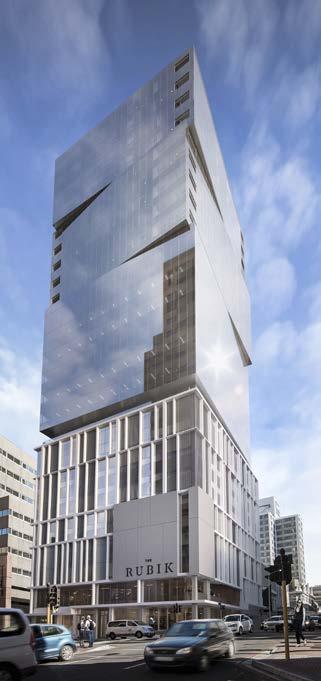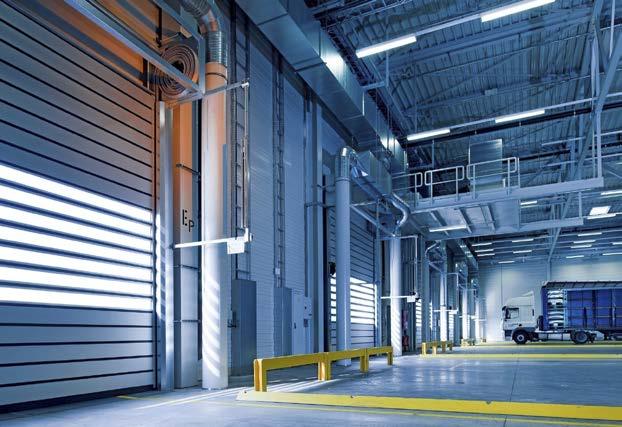
4 minute read
Other Property News
LOCALS SLOW TO EMBRACE WORK-FROM-HOME
THE GLOBAL shift to remote working has been significant but South Africans still need to get used to the idea of a permanent work-from-home model, believes George van Heerden, head of commercial property for Re/ Max Border in East London.
“The shift has, of course, had an impact on commercial property as tenants have downgraded to smaller spaces, hence the higher demand for smaller offices. ” he says.
Pre-Covid, the commercial market was active but there were already indications of a possible slowdown.
“Larger office spaces were starting to stand empty for longer than usual as landlords still expected a high rental yield. On the other hand, demand for retail and warehousing space was still high pre-Covid.”
Van Heerden says demand for these spaces as well as for small office spaces below 100m² has continued to remain active. But demand for larger offices remains a concern, with many standing vacant.
He advises landlords to look after their tenants and not expect to see the same rental yields they received in previous years.

Demand for small office spaces – below 100m² – is active. PICTURE: MAX VAKHTBOVYCH/PEXELS
Office space ‘will be worst performer’
LAST YEAR saw retail property and tenants taking a bigger income knock than office space but this year will change that, says FNB commercial property John Loos.
“This year swings around and office becomes the worst of the three main sectors because the sharp rise in office vacancy rates is putting pressure on market rentals.”
He says many companies are starting to scale back on their office space, not because they are under financial stress but due to the success of working from home.
Overall, this year will still be a year of negative total returns for the property market but less so than last year.
“I think it will be another year of capital value declines as, typically, these markets do not adjust that quickly.There is resistance to drops in valuations and so there will be a lag impact of last year’s recession.This will put pressure on rents and vacancy rates will rise.”
It will, therefore, not be a strong year for commercial property.
“The economy is still struggling to get back to a GDP level of 2019, so that is not going to demand a huge amount of additional space...
Loos believes industrial property will be the best performer, followed by retail, office and then hotels.

The commercial property sector is expected to fare better this year than last. PICTURE: BURST/PEXELS
Mixed-use precincts are good investment opportunities
THE ATTRACTION of mixed-use developments that blend commercial office space with retail and residential living is not just about convenience.
Paul Upton, who heads new developments for Dogon Group Properties, says they also create exciting investment opportunities with the option of attractive rental returns.
“This is because most are situated in central urban spaces, so the demand from potential tenants is high.
“As the world population continues to rise, suitable land for development is becoming scarce.
“In order for mixed-use developments to be a success, getting the right mix of retail, office and accommodation is crucial, he says. If each unit does not complement the other, developers can potentially struggle to fill the new space.
“For example, if there are retail units in the form of shops, cafes and bars, the right combination of accommodation and office space will impact these businesses’ efforts to receive footfall and patronage.
Developers also have to consider the needs of each business and ensure that these needs aren’t to the detriment of others within the development, such as noise disturbance from a restaurant that could potentially affect apartments above it, and so forth.”

Mixed-use properties can be attractive investments with high rental returns. PICTURE: DOGON GROUP PROPERTIES
LIGHT AT END OF TUNNEL FOR INDUSTRIAL PROPERTY
THE DEMAND for industrial property is likely to “slowly pick up” this year.
Gary Vos, franchisee of Rawson Cape Metropole Blaauwberg Commercial, says this will probably occur after the third wave of Covid-19 recedes, and much of the working population has been vaccinated, which will contribute to economic recovery.
“We could possibly see positive increases in demand and the filling of at least 50% of the vacancy rates for the industrial/warehouse sector towards the first half of 2022.”
Office occupancy rates, however, will take longer to get back to pre-Covid levels as people have become used to working from home now.
“At least 20% of people who used to work out of an office are now permanently working from home, ” Vos says.
Many landlords who own large office spaces will choose to convert them into residential apartments as the demand for residential units is much higher.
“The retail side will see slow progress in demand as businesses slowly recover financially. Supply will still be at a steady pace and new developments are set to kick off once demand increases.”

Demand for industrial property should improve this year. PICTURE: PIXABAY





